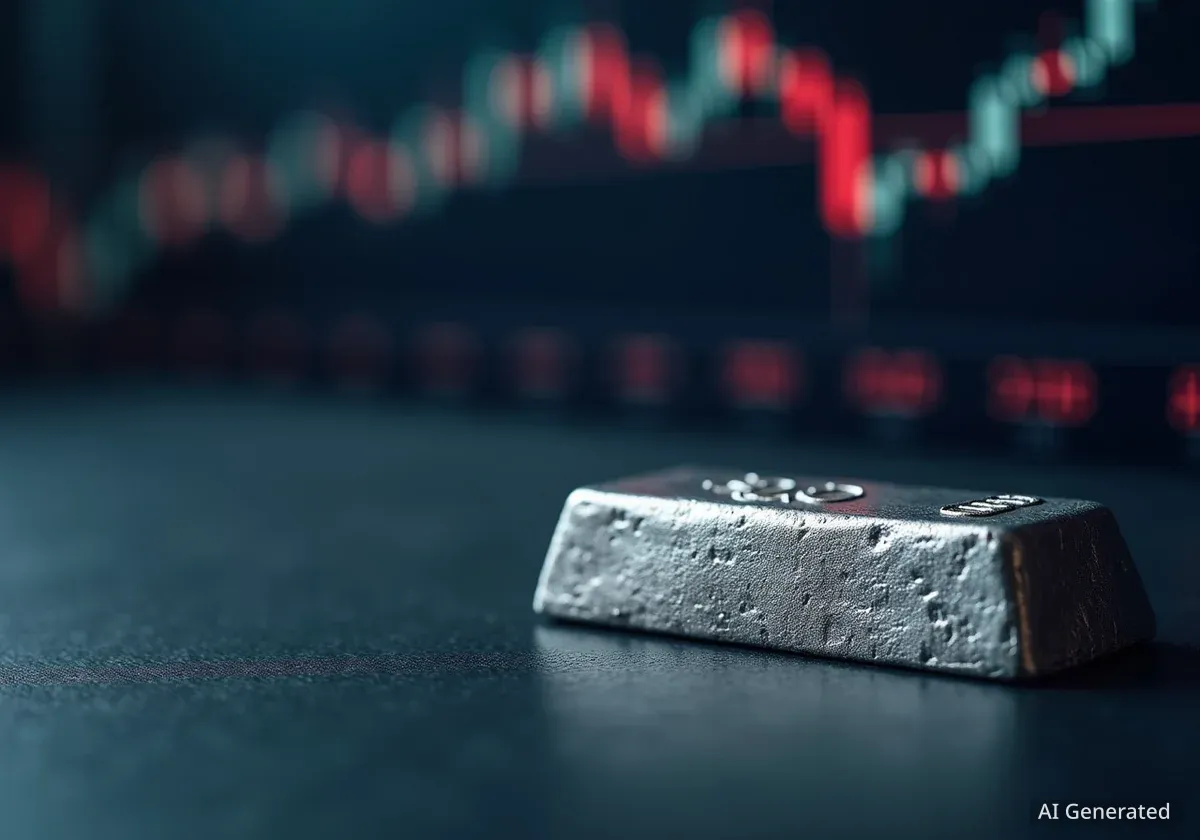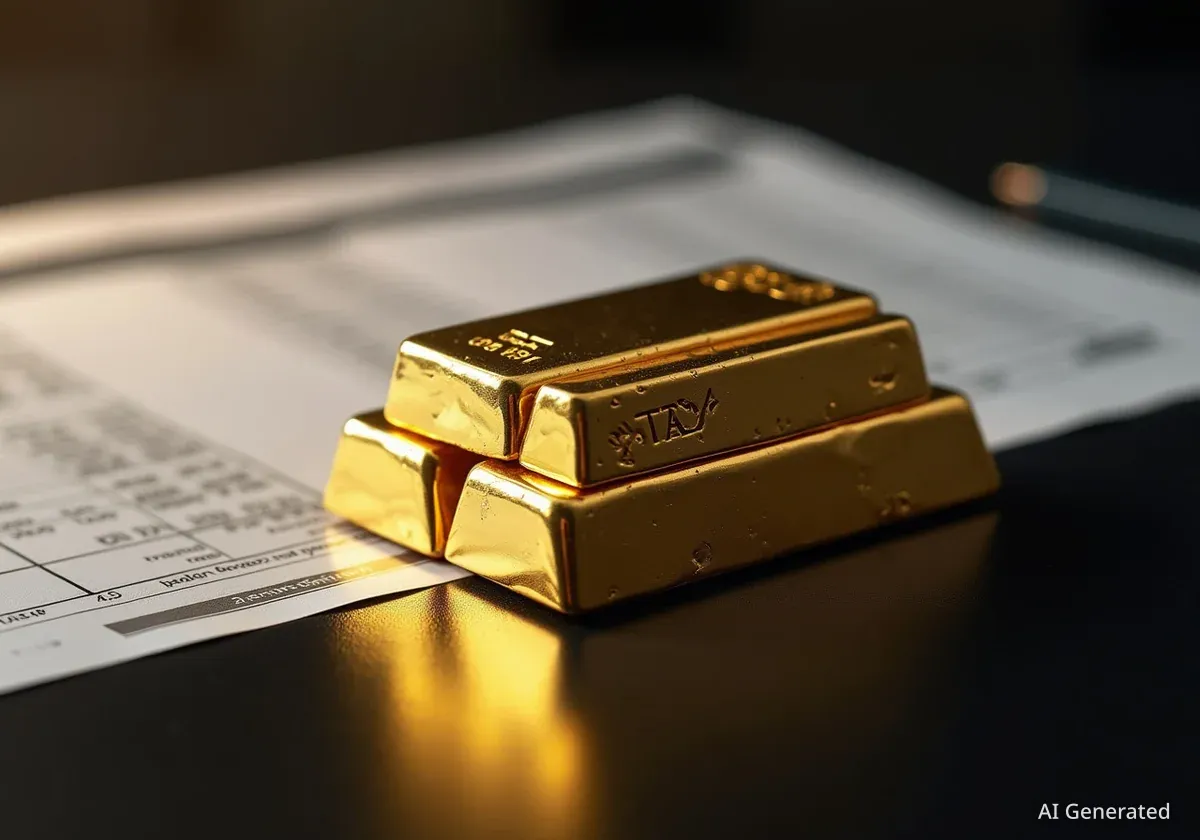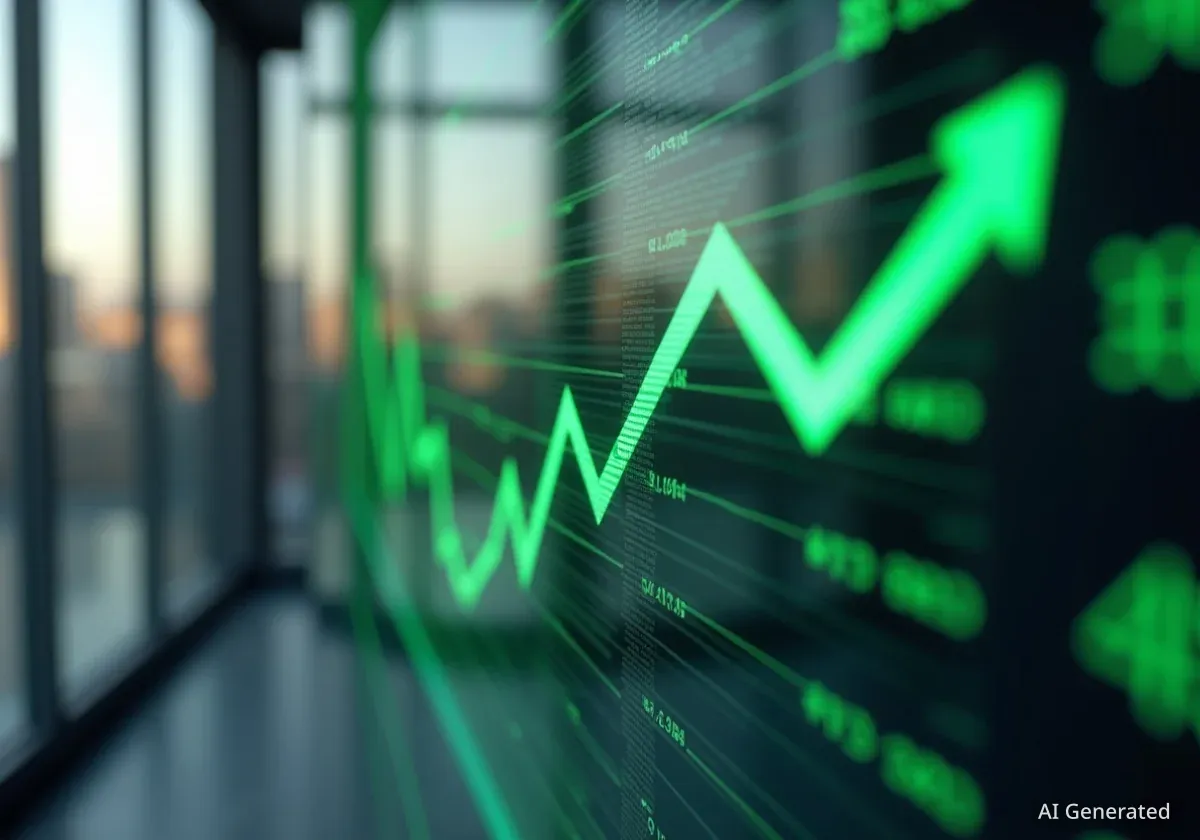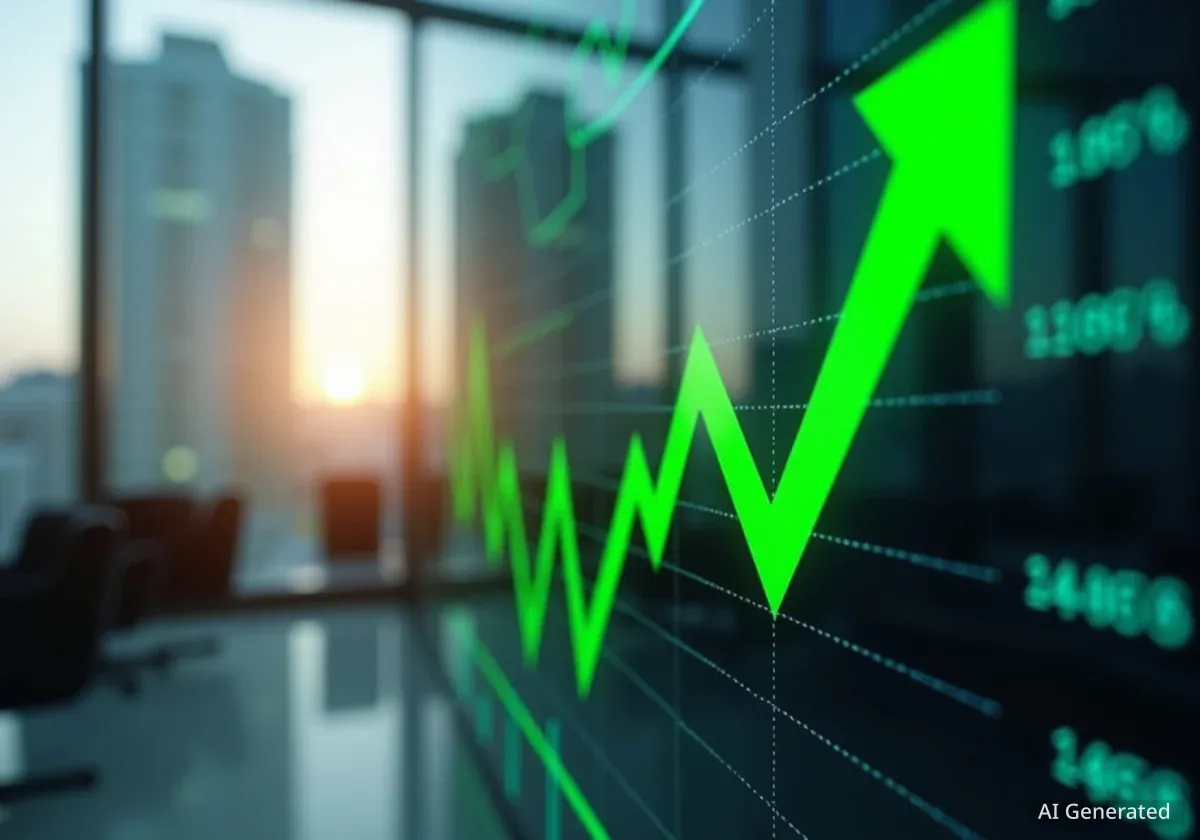Silver (XAG/USD) prices showed renewed strength on Friday, extending a recovery from earlier in the week. The precious metal maintained its position above the critical $41.50 support level, with buyers aiming to challenge higher resistance points after a recent pullback.
Currently trading around $42.35, silver's price action suggests a period of consolidation with a positive outlook. This stability follows a test of support that has attracted dip-buyers, reinforcing the metal's near-term bullish structure as it eyes a potential retest of its 14-year high.
Key Takeaways
- Silver's price is consolidating around $42.35 after a successful test of the $41.50 support zone.
- The primary resistance target for buyers remains the 14-year high of $42.97.
- Technical indicators, including the RSI and MACD, are showing signs of strengthening bullish momentum.
- The metal's value is influenced by industrial demand, investor sentiment, and broader macroeconomic factors like interest rates and US Dollar strength.
Price Stabilizes Above Critical Support
Silver's recent performance has been defined by its interaction with the $41.50 price level. This area, which previously acted as a resistance point, has now become a significant floor for the metal's value. Analysis of recent trading sessions shows that attempts to push the price below this mark have been met with consistent buying pressure, indicating strong investor confidence at this level.
The price is also holding firm above key moving averages, which are often used to gauge market trends. On the 4-hour chart, silver remains above both the 21-period Simple Moving Average (SMA) at $42.06 and the 100-period SMA at $41.22. This positioning reinforces the current constructive bias, suggesting that the underlying trend remains positive.
Should the $41.50 support fail to hold, the next significant area of interest for traders would be near $40.50. A break below this deeper base could signal a more substantial reversal in the short-term trend.
Understanding Support and Resistance
In market analysis, 'support' refers to a price level where an asset tends to stop falling, as buying interest is strong enough to overcome selling pressure. 'Resistance' is the opposite, a price level where an asset's rise is halted by selling pressure. When a resistance level is broken, it often becomes a new support level.
Path to Retesting 14-Year High
With support established, market participants are now focused on the upside potential. The first immediate hurdle for silver is the $42.50 resistance level. A decisive move above this point would clear the path for a potential retest of the recent 14-year high recorded at $42.97.
Surpassing this multi-year peak would be a significant bullish signal, potentially attracting a new wave of investment and pushing prices toward the next psychological milestone at $43.50. Until that peak is breached, the market is likely to remain in a phase of consolidation, albeit with a clear upward inclination.
"The ability of silver to hold the $41.50 level is crucial. It shows that buyers are willing to step in on dips, which is a healthy sign for the continuation of the uptrend."
The price action suggests a market gathering strength before its next major move. The balance between buyers and sellers at these key levels will determine whether the rally can extend further in the coming sessions.
Momentum Indicators Turn Favorable
Technical indicators are providing further evidence of building upside momentum. The Relative Strength Index (RSI), a popular tool for measuring the speed and change of price movements, has recovered to a reading of 57. This figure indicates that bullish momentum is growing without the asset being in 'overbought' territory, leaving room for further price appreciation.
RSI and MACD Explained
- Relative Strength Index (RSI): An oscillator that measures momentum on a scale of 0 to 100. A reading above 70 is typically considered overbought, while a reading below 30 is considered oversold.
- Moving Average Convergence Divergence (MACD): A trend-following momentum indicator that shows the relationship between two moving averages of an asset's price. A crossover can signal a potential change in trend.
Additionally, the Moving Average Convergence Divergence (MACD) indicator is showing positive signs. The MACD histogram is shifting into positive territory, and a bullish crossover appears to be developing. When the MACD line crosses above its signal line, it is often interpreted as a buy signal by technical analysts.
Combined, these indicators suggest that as long as silver maintains its footing above the $41.50 support floor, the pressure is likely to build for a move higher.
Fundamental Drivers of Silver's Value
Beyond technical charts, silver's price is influenced by a complex mix of fundamental factors. Its dual role as both a precious metal and an industrial commodity makes it unique in the financial markets.
Investment and Safe-Haven Demand
Like gold, silver is often sought by investors as a store of value and a hedge against inflation and economic uncertainty. During periods of geopolitical tension or fears of a recession, demand for precious metals can rise. However, silver's safe-haven appeal is generally considered secondary to that of gold.
Monetary policy also plays a critical role. As a non-yielding asset, silver tends to perform well in low-interest-rate environments, as the opportunity cost of holding it is lower. The value of the U.S. Dollar is another key driver; since silver is priced in dollars, a weaker dollar typically makes it cheaper for holders of other currencies, often boosting demand and prices.
Industrial Applications
Approximately half of all silver demand comes from industrial uses, setting it apart from gold. Its superior electrical conductivity makes it an essential component in a wide range of products:
- Electronics: Used in circuit boards, semiconductors, and electrical contacts.
- Solar Energy: A key material in the manufacturing of photovoltaic cells for solar panels.
- Automotive: Utilized in electrical systems and components for modern vehicles.
Economic growth in major industrial economies like the United States and China can therefore have a direct impact on silver demand and prices. Furthermore, consumer demand for jewelry, particularly in markets like India, also contributes significantly to its overall valuation.





